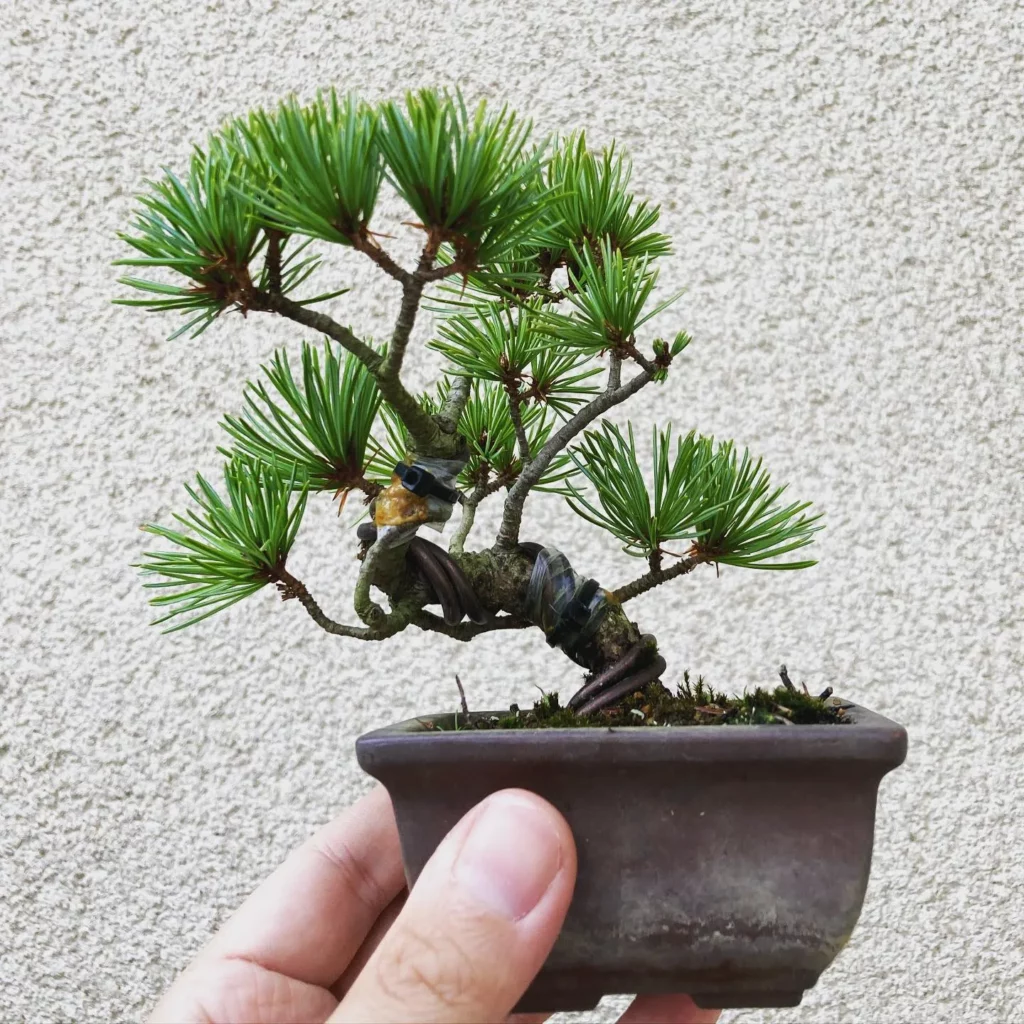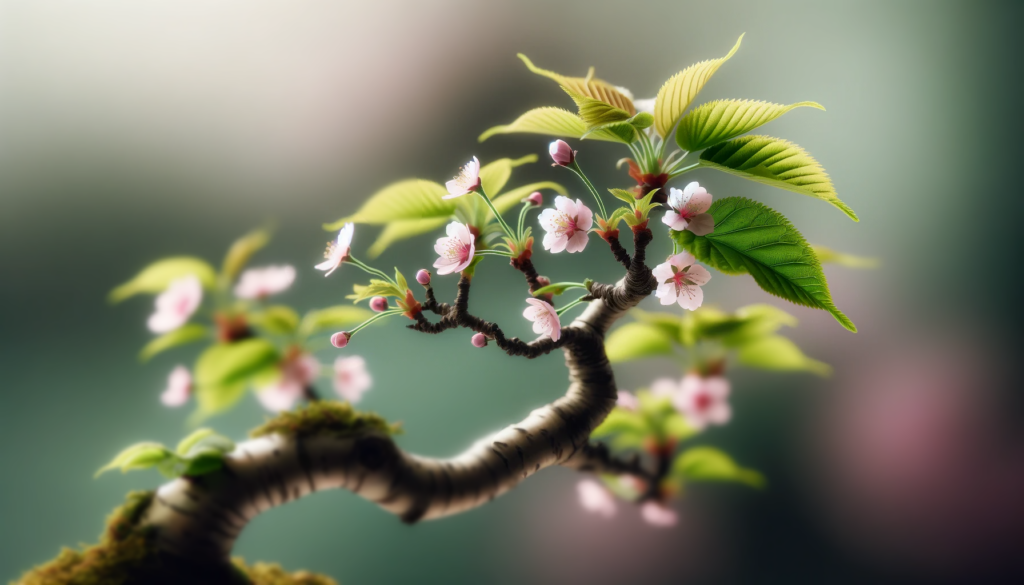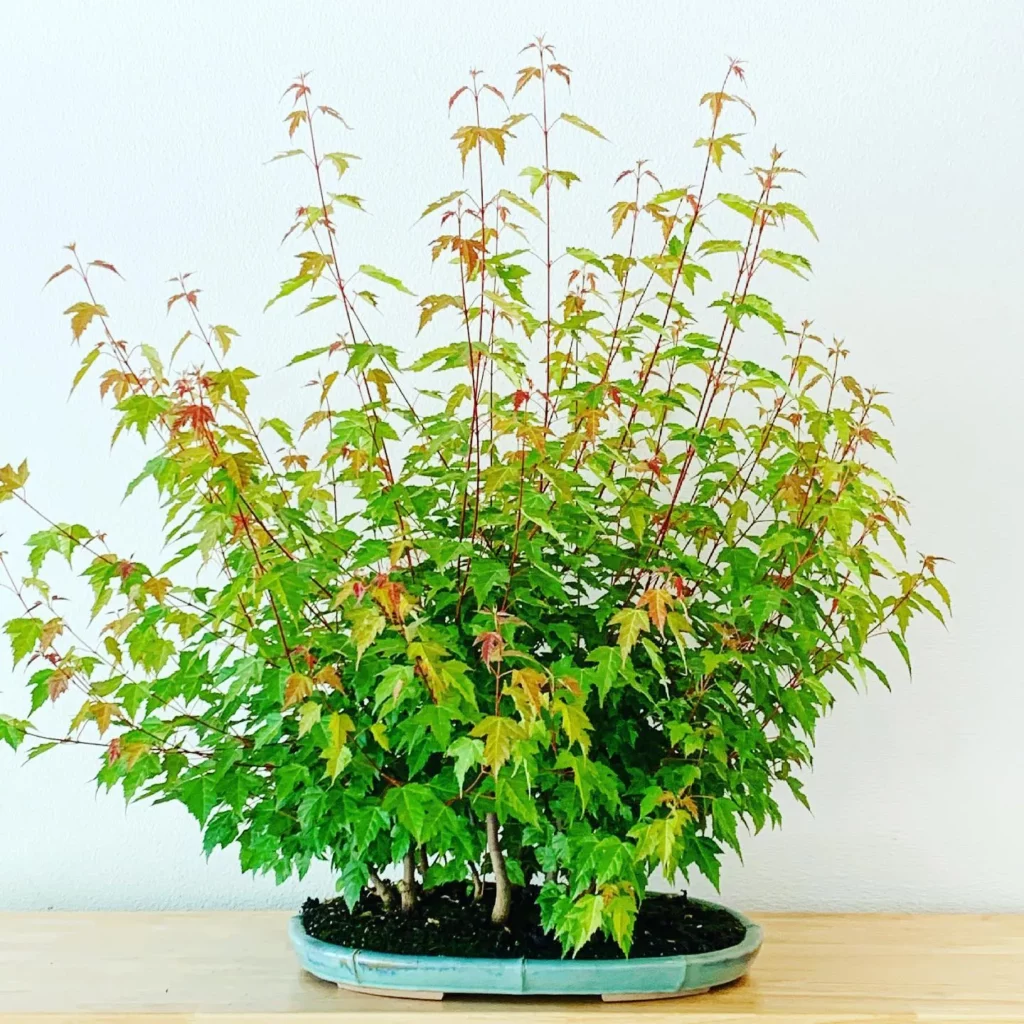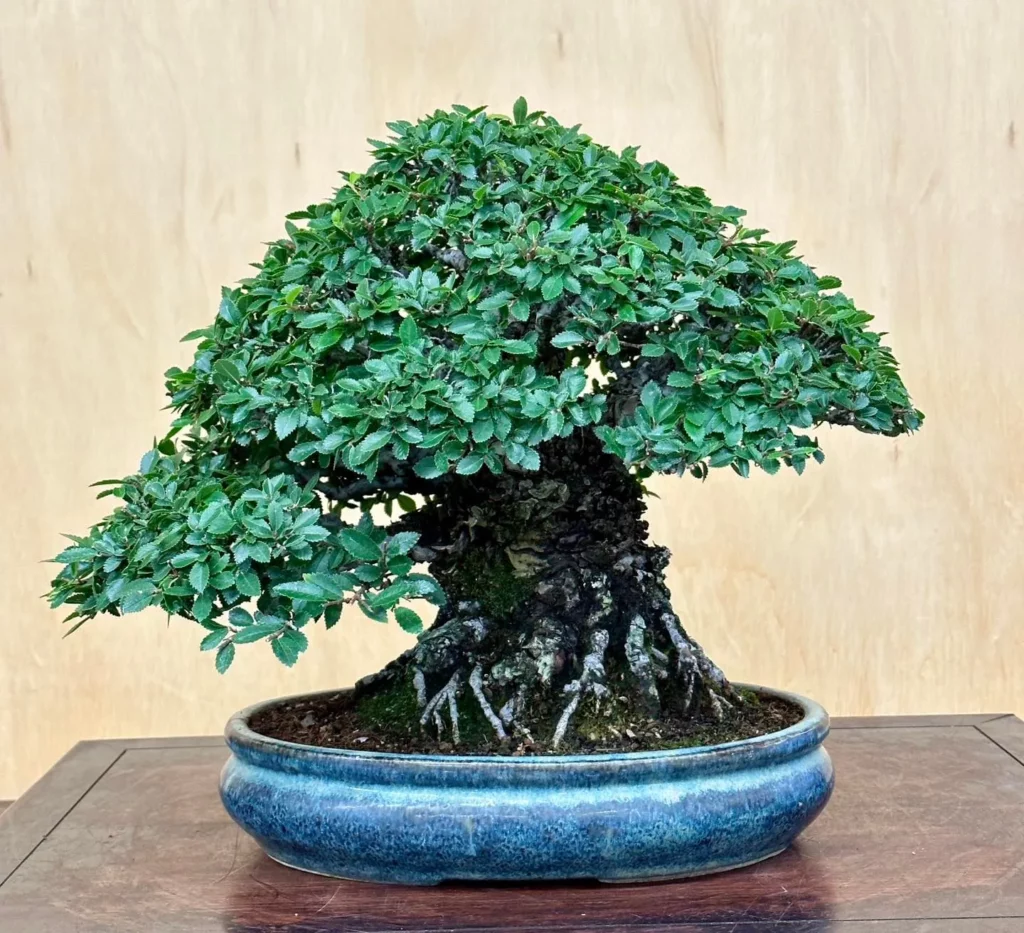Welcome to our guide on sooty mold, a common issue faced by bonsai tree enthusiasts. In this article, we will explore the causes of sooty mold on bonsai trees, discuss preventive measures you can take to keep your trees healthy, and provide effective methods for removing the mold if it has already appeared. So, if you’re dealing with sooty mold on your precious bonsai tree or want to ensure it never becomes a problem, keep reading!
What Is Sooty Mold?

Sooty mold is a type of fungal growth that can develop on the leaves, branches, and trunk of bonsai trees, giving them a black or dark gray appearance. It gets its name from its resemblance to soot or ash. While the mold itself does not directly harm the tree, it can have negative effects on its overall health and vitality.
The growth of sooty mold occurs as a result of honeydew, a sticky substance excreted by sap-sucking insects such as aphids, mealybugs, and scale insects. These insects feed on the plant sap, and their excretion provides the perfect food source for the mold to thrive.
Sooty mold does not penetrate the tree’s tissues or cause any physical damage. However, its presence can hinder photosynthesis, the process by which plants convert sunlight into energy. The mold forms a layer on the leaves, blocking sunlight from reaching them, and reducing the tree’s ability to produce energy and grow.
While sooty mold itself is not harmful to humans or animals, it can have an impact on the aesthetic appeal of bonsai trees. The black coating can make the tree look dirty and unattractive.
To effectively prevent and manage sooty mold on bonsai trees, it is important to address the underlying cause – the presence of sap-sucking insects. By controlling the insect population through regular monitoring and appropriate pest control measures, you can minimize the production of honeydew and, in turn, limit the growth of sooty mold.
Causes Of Sooty Mold On Bonsai Trees

Sooty mold on bonsai trees is primarily caused by an infestation of sap-sucking insects such as aphids, mealybugs, and scale insects. These pests excrete a sticky substance called honeydew, which serves as a food source for the growth of sooty mold. The presence of sap-sucking insects not only leads to the secretion of honeydew, but also weakens the tree’s defense mechanisms, making it more susceptible to fungal growth.
List of causes:
- Sap-sucking insects: Aphids, mealybugs, and scale insects infest the bonsai tree and excrete honeydew, providing a favorable environment for sooty mold to thrive.
- High humidity: Excessive moisture in the air creates ideal conditions for sooty mold to develop and spread on the bonsai tree.
- Poor air circulation: Lack of proper airflow around the bonsai tree can contribute to the accumulation of moisture and the growth of sooty mold.
How To Identify Sooty Mold On Your Bonsai Tree
Sooty mold can be easily identified on bonsai trees by its distinct appearance. Look for a dark black or brown coating that covers the leaves, stems, and branches of the tree. This coating has a powdery or flaky texture and can often be wiped off with your fingers or a cloth.
If you notice the presence of this black coating on your bonsai tree, it is a clear indication that it has been affected by sooty mold. However, it’s important to remember that sooty mold is only a symptom of an underlying problem.
Checking for insect infestations is crucial as sooty mold is often caused by sap-sucking insects like aphids, mealybugs, and scale insects. These insects excrete a sticky substance called honeydew, which provides a food source for the mold to grow and thrive on.
Signs of Sooty Mold on Bonsai Tree:
- Black or dark brown coating on leaves, stems, and branches
- Powdery or flaky texture
- Easily wiped off with fingers or cloth
- Pest infestation, such as aphids, mealybugs, or scale insects
Effects Of Sooty Mold On Bonsai Trees
While sooty mold does not directly harm the bonsai tree, it does have negative effects on its health. The black coating created by the mold can block sunlight from reaching the leaves, hindering the process of photosynthesis. As a result, the tree’s ability to produce necessary energy for growth is significantly reduced.
Sooty mold also attracts sap-sucking insects, such as aphids and whiteflies. These pests are drawn to the sweet honeydew excreted by the mold, further damaging the tree’s health and potentially transmitting other diseases.
Listed below are the effects of sooty mold on bonsai trees:
- Reduces photosynthesis by blocking sunlight
- Decreases the tree’s ability to produce energy for growth
- Attracts sap-sucking insects, leading to additional damage
- Increases the tree’s vulnerability to other infections
How Sooty Mold Affects The Health And Growth Of Bonsai Trees

Sooty mold can have a detrimental impact on the health and growth of your beloved bonsai trees. One of the key ways it affects them is by weakening their immune system. When sooty mold spreads, it compromises the tree’s ability to defend itself against other diseases and infections, making it more susceptible to issues like root rot and powdery mildew. The weakened immune system of the tree leaves it vulnerable to various threats that can hinder its growth and overall well-being.
The longer sooty mold is allowed to grow unchecked, the more severe its impact becomes on the health and vitality of the bonsai tree. As the mold spreads and thickens, it creates a barrier that blocks sunlight from reaching the leaves, hindering the process of photosynthesis. This reduction in photosynthesis can lead to stunted growth and a weakened tree.
Effects of Sooty Mold on Bonsai Trees:
- Weakens the tree’s immune system, making it more susceptible to other diseases and infections
- Blocks sunlight, hindering photosynthesis and reducing growth
- Attracts sap-sucking insects, further damaging the tree’s health
- Potentially leads to other infections and complications
The Impact Of Sooty Mold On The Aesthetic Appeal Of Your Bonsai Tree
Sooty mold can have a significant impact on the aesthetic appeal of bonsai trees. The black and powdery appearance of the mold contrasts with the green leaves of the tree, giving it an unsightly look. When a severe outbreak occurs, the mold forms a thick layer that covers the entire plant, making it difficult for sunlight to reach the leaves below. This lack of sunlight can lead to yellowing and dropping off of leaves, ultimately resulting in the death of the tree.
Prevention And Treatment Of Sooty Mold On Bonsai Trees
Preventing the growth and spread of sooty mold is crucial for maintaining the health of your bonsai trees. By following some simple preventive measures, you can keep your trees free from this unsightly fungus.
Preventive Measures
- Maintain proper air circulation around the bonsai tree by avoiding overcrowding and ensuring adequate space between trees.
- Control insect infestations, as sap-sucking insects are the main culprits behind the secretion of honeydew, which attracts sooty mold. Regularly inspect your bonsai trees for signs of infestation and take appropriate measures to eliminate the pests.
- Keep the growing area clean and tidy. Remove fallen leaves, debris, and dead plant matter that can provide a breeding ground for mold.
- Avoid excessive fertilizer use, as the excess nutrients can promote the growth of mold. Follow the recommended dosage and schedule for fertilizing your bonsai trees.
- Monitor your bonsai trees for signs of other fungal diseases, as they can weaken the tree’s immune system and make it more susceptible to sooty mold. Take immediate action if you notice any signs of fungal infection.
Treatment Options
If sooty mold is already present on your bonsai tree, there are several treatment options available:
- Spray the affected areas with a mixture of water and soap solution. This will help remove the mold and prevent its further growth.
- Use horticultural or neem oil to suffocate the mold spores and hinder their development.
- Apply fungicides specifically designed for treating fungal growth on trees and plants. Follow the instructions provided with the fungicide and repeat the application as needed.
Tips for Preventing the Growth and Spread of Sooty Mold on Your Bonsai Tree
To keep your bonsai tree healthy and free from sooty mold, follow these prevention tips:
- Maintain proper air circulation: Ensure that your bonsai tree is positioned in an area with good air movement. This can help reduce humidity levels and create an environment less favorable for the growth of sooty mold.
- Control insect infestations: Regularly inspect your bonsai tree for signs of sap-sucking insects like aphids and mealybugs. Use appropriate insect control methods to prevent these pests from excreting honeydew that attracts sooty mold.
- Keep the growing area clean: Regularly remove fallen leaves, debris, and dead insects from around your bonsai tree. This helps minimize the potential food source for insects and reduces the chances of mold growth.
- Avoid excessive fertilizer use: Use fertilizers judiciously as excessive amounts can lead to increased honeydew production by insects and subsequent mold growth. Follow the recommended guidelines for fertilizing your bonsai tree.
- Monitor for signs of other fungal diseases: Keep a close eye on your bonsai tree for any signs of fungal diseases other than sooty mold. Early detection and prompt treatment can prevent the spread of diseases and protect your tree’s health.
Effective Treatment Options For Removing Existing Sooty Mold From Your Bonsai Tree

If your bonsai tree is already affected by sooty mold, there are several treatment options available to help you remove it and restore the health and appearance of your tree.
1. Water and soap solution:
A simple and effective treatment is to spray your bonsai tree with a solution of water and soap. Mix a few drops of mild liquid soap with water in a spray bottle and lightly mist the affected areas. The soap helps to break down the mold and wash it away.
2. Horticultural or neem oil:
No products found.
Another option is to use horticultural or neem oil, which suffocates the mold spores and prevents their growth. Dilute the oil according to the instructions on the bottle and apply it to the affected areas of your bonsai tree.
3. Fungicides:
If the mold infestation is severe or other treatments have not been successful, you can use fungicides specifically designed for controlling fungal growth on trees and plants. Follow the instructions provided with the fungicide and apply it according to the recommended dosage and frequency.
Preventing Mold and Other Diseases on Your Bonsai Tree
Proper care practices are essential for preventing the growth of mold and other diseases on your beloved bonsai tree. By following these guidelines, you can maintain the health and vitality of your bonsai:
- Regular Watering: Ensure your bonsai tree receives the right amount of water, neither too much nor too little. Proper watering helps maintain optimal moisture levels, preventing conditions that favor mold growth.
- Fertilization: Provide your bonsai tree with the necessary nutrients through regular fertilization. A well-nourished tree is more resilient against diseases and better equipped to fight off potential mold infestations.
- Pruning: Regularly prune your bonsai tree to maintain its shape and promote healthy growth. Removing dead or diseased branches helps prevent the spread of mold and other infections.
- Inspection: Regularly inspect your bonsai tree for signs of mold or infection. Look out for black or discolored spots, unusual growths, or changes in foliage. Catching any issues early will allow for prompt treatment and prevent further damage.
- Improving Air Movement: Ensure proper air circulation around your bonsai tree by using a gentle fan. Adequate air movement helps prevent moisture buildup and creates an environment less conducive to mold growth.
- Avoiding Foliage Misting: While misting foliage can be beneficial for some plants, it can lead to moisture retention on the leaves of your bonsai tree, providing an ideal environment for mold growth. Instead, water the soil directly to avoid excessive moisture on the foliage.
- Treating with Anti-Fungal Solutions: As a preventive measure, consider treating your bonsai tree with anti-fungal solutions. These solutions can help create an inhospitable environment for mold and other diseases, safeguarding the health and longevity of your tree.
No products found.
Identifying Specific Molds and Fungi Commonly Found on Bonsai Trees
When it comes to bonsai trees, specific molds and fungi can pose a threat to their health and vitality. Some of the most common ones that you may encounter include black spot fungus, leaf spot fungus, mildew, and rust. Each of these molds and fungi has its own distinct characteristics and can affect different parts of the tree.
Proper identification is crucial in determining the appropriate treatment for these mold and fungal issues. By closely observing your bonsai tree, you can spot any signs of mold or fungal growth and take immediate action. It’s important to remember that early intervention can prevent further damage and promote the tree’s longevity.
Treatment options for molds and fungi on bonsai trees vary depending on the specific type of mold and the extent of the infestation. In some cases, removing the affected areas or leaves may be sufficient. However, if the mold has spread extensively, you may need to use fungicides specifically designed for bonsai trees. Additionally, improving the environmental conditions, such as providing proper air circulation and adjusting humidity levels, can help prevent the recurrence of mold and fungal growth.
To maintain the health and beauty of your bonsai tree, it’s essential to be vigilant and proactive in identifying and addressing molds and fungi. By taking appropriate measures, such as timely treatment and creating a conducive environment, you can ensure that your bonsai tree thrives and remains a stunning centerpiece of your garden or indoor space.
After this check out our other articles on:
FAQ
What is sooty mold?
Sooty mold is a type of fungal growth that appears as a black or dark gray coating on the leaves, branches, and trunk of bonsai trees.
What causes sooty mold on bonsai trees?
Sooty mold is caused by the presence of honeydew, a sticky substance excreted by sap-sucking insects such as aphids, mealybugs, and scale insects. Factors such as high humidity levels and poor air circulation can also contribute to the growth of sooty mold.
How can I identify sooty mold on my bonsai tree?
Sooty mold appears as a black or dark brown coating on the leaves, stems, and branches of bonsai trees. It has a powdery or flaky texture and can be easily wiped off with your fingers or a cloth.
Does sooty mold harm bonsai trees?
While sooty mold does not directly harm the bonsai tree, it can block sunlight from reaching the leaves, hindering photosynthesis and reducing the tree’s ability to produce energy for growth. Additionally, sooty mold attracts sap-sucking insects that can further damage the tree’s health.
How does sooty mold affect the health and growth of bonsai trees?
Sooty mold weakens the immune system of bonsai trees, making them more susceptible to other diseases and infections. This can lead to reduced growth and overall vitality of the tree.
Does sooty mold impact the aesthetic appeal of bonsai trees?
Yes, sooty mold can have a significant impact on the aesthetic appeal of bonsai trees. The black coating of the mold contrasts with the green leaves, giving the tree an unappealing look.
How can I prevent and treat sooty mold on my bonsai tree?
Preventive measures include maintaining proper air circulation, controlling insect infestations, keeping the growing area clean, and monitoring for signs of other fungal diseases. Treatment options for existing sooty mold include spraying with water and soap solution, using horticultural or neem oil, and applying fungicides.
What are some tips for preventing the growth and spread of sooty mold on my bonsai tree?
To prevent the growth and spread of sooty mold, it is important to maintain proper air circulation, control insect infestations, keep the growing area clean, avoid excessive fertilizer use, and monitor for signs of other fungal diseases.
What are effective treatment options for removing existing sooty mold from my bonsai tree?
Treatment options for existing sooty mold include spraying with water and soap solution, using horticultural or neem oil to suffocate the mold spores, and applying fungicides specifically designed for preventing fungal growth on trees and plants.
How can I prevent mold and other diseases on my bonsai tree?
Proper care practices such as regular watering, fertilization, and pruning can help prevent the growth of mold and other diseases. Regular inspection of the tree and improving air movement around it can also help prevent moisture buildup and mold growth.
What are some common molds and fungi found on bonsai trees?
Common molds and fungi found on bonsai trees include black spot fungus, leaf spot fungus, mildew, and rust. Proper identification is important for determining the appropriate treatment.




